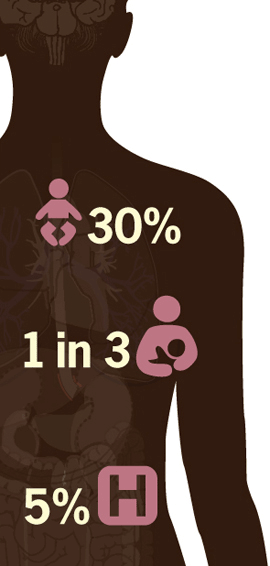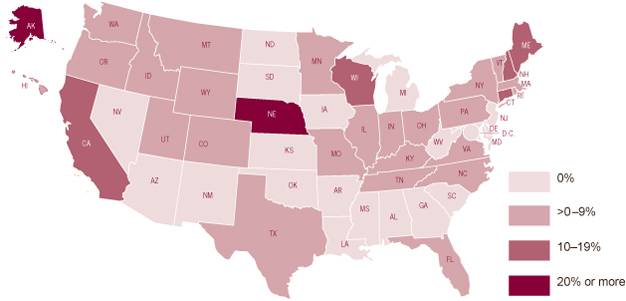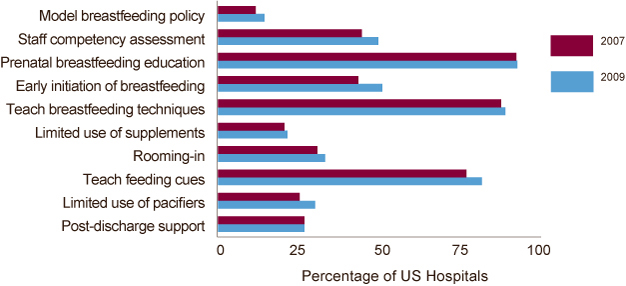Childhood obesity is an escalating problem in our country, with more than 20 percent of children ages 2 to 5 now overweight or obese, according to a recent report. Many factors, such as poor nutrition choices, lack of physical activity, lack of sleep and even socioeconomic status have been fingered as contributors to this epidemic. In order to start children off with the healthiest start possible, experts advise that all babies are breastfed. Research has shown that babies who are breastfed are less likely to be overweight or obese later in life and are less likely to suffer from several health conditions and diseases, such as respiratory and ear infections, type 2 diabetes, and even Sudden Infant Death Syndrome (SIDS). While the American Academy of Pediatrics, the World Health Organization, and several other health organizations recommend that babies are breastfed for the first year of life, few are even making it to the 6 month mark. According to a 2011 comprehensive report about obesity, only 13.3 percent of mothers in the United States are breastfeeding exclusively through six months. Because of the continuing findings of the importance of breastfeeding and its relationship to body weight later in life, we want to share the following data from the Centers for Disease Control and Prevention (CDC):
Childhood obesity is an epidemic. In the US, 1 preschooler in 5 is overweight, and half of those kids are obese. Breastfeeding helps protect against childhood obesity. A baby’s risk of becoming an overweight child goes down with each month of breastfeeding. In the US, most babies start breastfeeding, but within the first week, half have already been given formula, and by 9 months, only 31% of babies are breastfeeding at all. Hospitals can either help or hinder mothers and babies as they begin to breastfeed. The Baby-Friendly Hospital Initiative describes Ten Steps to Successful Breastfeeding that have been shown to increase breastfeeding rates by providing support to mothers. Unfortunately, most US hospitals do not fully support breastfeeding; they could do a lot more to encourage mothers to start and continue breastfeeding.
The Baby-Friendly Ten Steps to Successful Breastfeeding
1. Have a written breastfeeding policy that is routinely communicated to all health care staff.
2. Train all health care staff in skills necessary to implement this policy.
3. Inform all pregnant women about the benefits and management of breastfeeding.
4. Help mothers initiate breastfeeding within 1 hour of birth.
5. Show mothers how to breastfeed and how to maintain lactation, even if they are separated from their infants.
6. Give newborn infants no food or drink other than breast milk, unless medically indicated.
7. Practice “rooming in”— allow mothers and infants to remain together 24 hours a day.
8. Encourage breastfeeding on demand.
9. Give no pacifiers or artificial nipples to breastfeeding infants.
10. Foster the establishment of breastfeeding support groups and refer mothers to them on discharge from the hospital or clinic.









Nutrition & Lifestyle